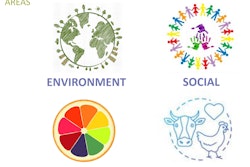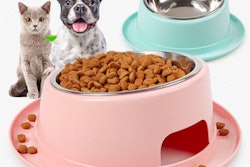
Amid the prolonged economic slump that started in 2014, the Brazilian pet food market is showing signs of countercyclical performance. As other markets in the region are in a similar situation, it suggests that the pet food industry is immune to economic setbacks and decreasing consumption.
Why is pet food in Brazil flourishing?
It is well-known that the pet population increases with the human population, in Brazil and elsewhere. Moreover, Brazil is also benefiting from the building of new houses and high rises in the major cities.
Brazilian pet food exports contributed to healthy growth in 2018, as sales to other countries rose 24% compared to 2017 levels. The country sent 260.6 thousand metric tons of pet food to other markets in 2018, while imports remained at rather low levels.
On another note, Brazilian pet food producers and consumers face a rough taxation scheme, as the tax burden reaches an average rate of 51.2%, according to trade association Abinpet. The biggest tax under the current scheme is called ICMS and levies an average rate of 24.74% to transportation, communication and other procurement services of the local pet food industry. Overall pet food taxation is regressive, as it hinders the consumption of low-income consumers, Abinpet said.
Despite this situation, the local pet food market posted 3.25% volume growth in 2018, meaning the second consecutive year of positive and steady growth. In value terms, the market registered 7.8% growth in 2018.
More pets than children helping pet food growth
For Brazilians, pets are part of the family. Abinpet said that in 2018, there were 54.2 million dogs and 23.9 million cats in the country. According to press sources, nowadays Brazil has more households with a pet than homes with children, suggesting that pets are increasingly getting more attention, care and affection.
Still, the penetration rate of pet food in Brazilian households is relatively low compared to other markets in the region. This indicates that restrictive taxation is likely hindering growth potential. Nonetheless, the market is estimated to continue growing in 2019, regardless of a sluggish economy and high taxes.















